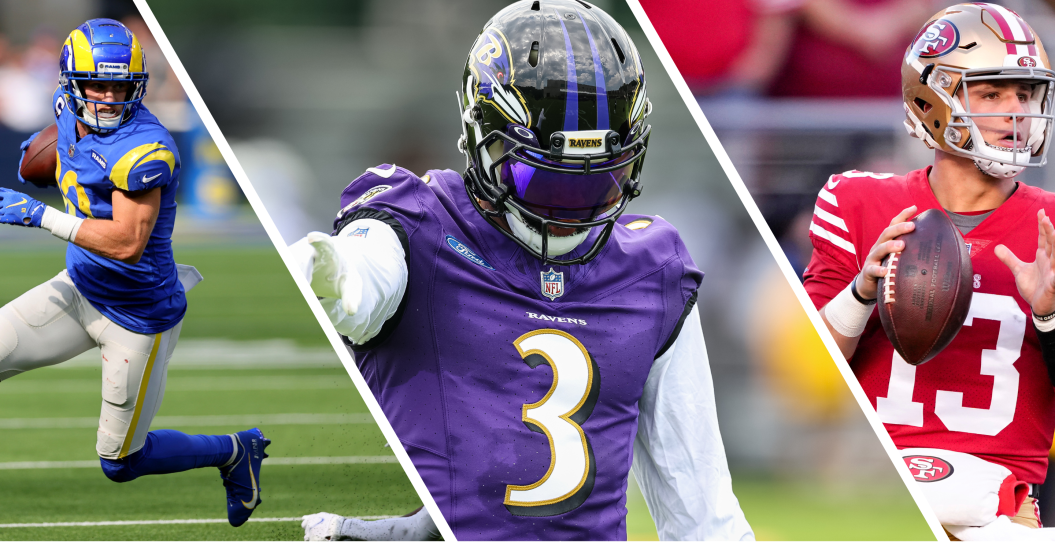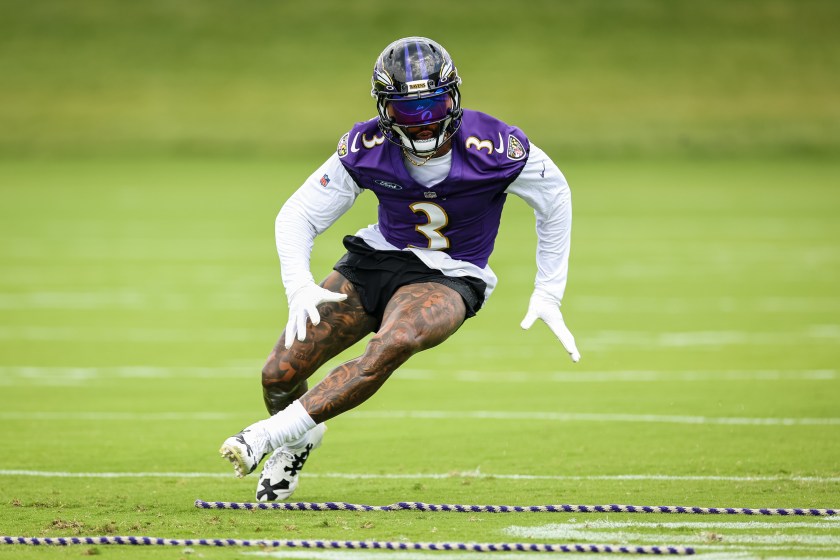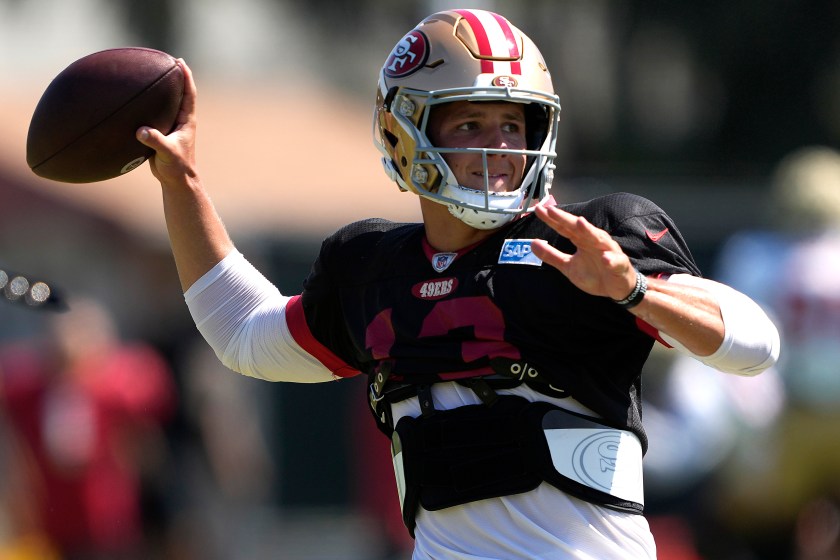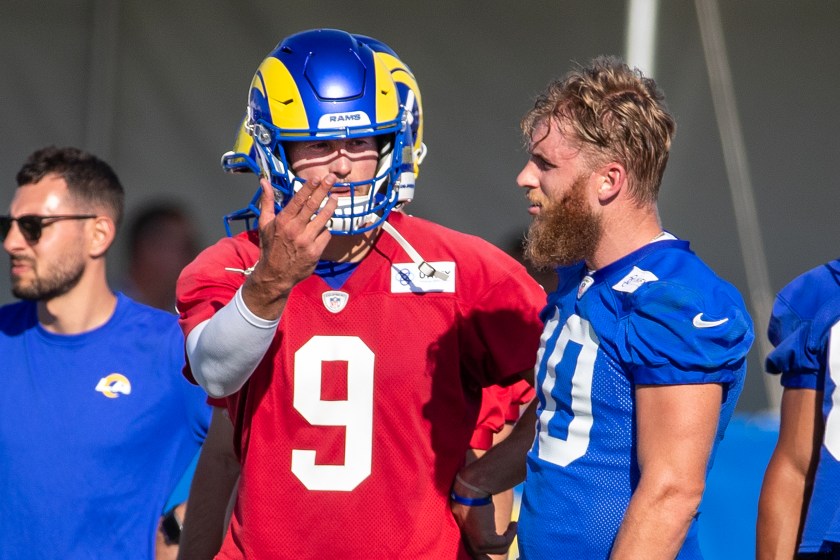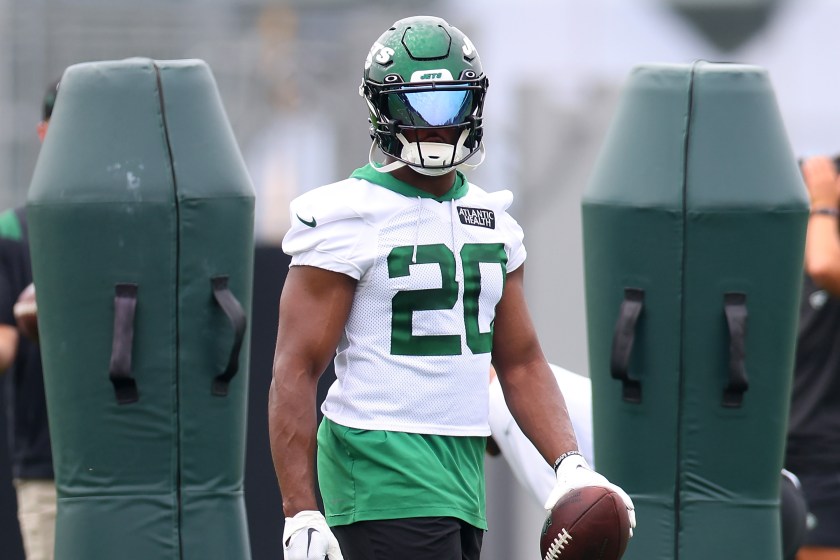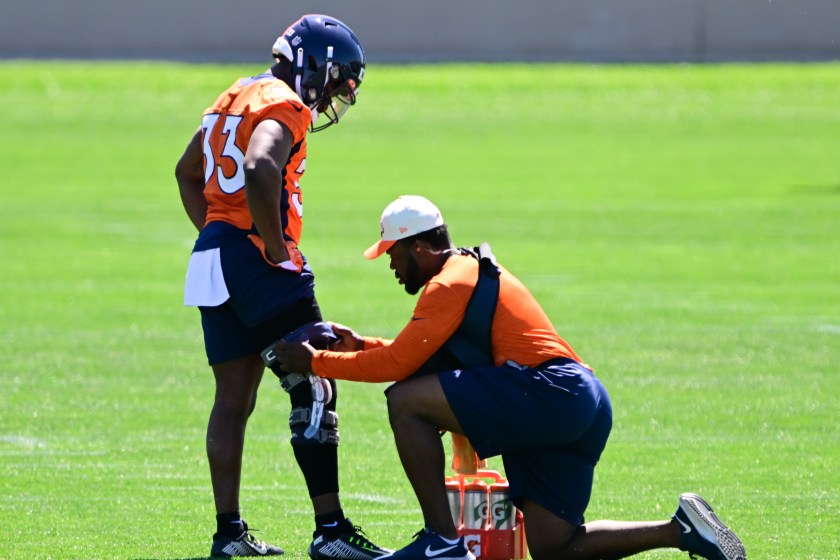NFL injuries can derail a season and for four of these players, it certainly did.
Videos by FanBuzz
Brock Purdy went from Mr Irrelevant to the doorstep of the Super Bowl, so even with his elbow injury, it's hard to say anything about his season was a failure. However, with major injuries can come major consequences or major comebacks. One of these five players could well be the Comeback Player of the Year in the NFL, and the others will determine just how far their teams go in 2023. Let's take a quick look at the injuries, the context, and what I believe 2023 holds for them.
Odell Beckham Jr, Baltimore Ravens (sprained knee)
Odell Beckham Jr had his second ACL reconstruction after injuring himself in Super Bowl LVI and then ... not much. His rehab was slow despite no reported setbacks and workouts for teams during the season didn't result in the expected signings. A source told me that Beckham looked "sluggish and off his best." Normally, an ACL reconstruction has an expected return time of six to nine months. Many said that Beckham's took longer because it was his second on the same knee (a revision), but that's seldom the case. The surgery is exactly the same and there's no disadvantage. Some even say knowing the process helps the second go smoother.
With no explanation why Beckham didn't sign in 2022, it was something of a surprise that the Ravens coughed up big cash for him heading into 2023. They already had Rashod Bateman returning from a foot issue and drafted Zay Flowers high, but if it was an enticement to Lamar Jackson (or a request), it worked. Beckham is now 18 months post-reconstruction heading into camp and he's shown that he can move again. There's still no indication of complication or deficit to explain the absence, but if the rest of his body got some rest, maybe his knee will be better for it.
What will help Beckham is playing his home games on grass instead of turf. For all the talk of "there's no difference" by the NFL, ask a player or just go walk on turf, as more and more high schools have been sold that it's cheaper. While there are teams that can't go grass inside, there's really no good excuse for outdoor teams having turf. Charlotte's "we use the stadium for too many other things" is mostly that the billionaire owner doesn't want to pay up to make sure there's grass growing and sod ready. If Beckham makes it through the season healthy and puts up the big numbers expected, he might want to thank the grass, or at least the groundskeepers.
Brock Purdy, San Francisco 49ers (sprained elbow)
Related: NFC East Preview: League Insiders Weigh in on Ultra-Competitive Division
Nope, it's not Tommy John. Brock Purdy had a procedure known as an InternalBrace repair, where his sprained elbow ligament was stitched back together ("repaired") and then a piece of strong fabric was laid over it to take the stress off. (I wrote about it in 2016.)This allows the thrower to come back quicker and there's signs that it's stronger overall, leading to less do-overs, which are common in baseball. It's a new surgery, but it's been done on hundreds of players and even a couple NFL quarterbacks. The downside is that none of them were expected to lead a team to the playoffs the next year.
Purdy's rapid rise is partially due to injuries. Just like Tom Brady, Purdy only got the chance because he was the last 49ers QB left standing. The team simply couldn't keep it's players, especially it's quarterbacks healthy. They'll have to do that a lot better with Purdy or Trey Lance or whoever ends up back there. Having a full season of Christian McCaffrey should help with production, but it's still the blocking that's the worry.
Purdy's biggest danger is getting hit, then reaching out and breaking the fall with an outstretched arm. Even the super-strong InternalBrace fabric can be over-stressed and its one that Purdy (and every QB) will face far too many times, on sacks, tackles, and knock-downs. Purdy has plenty of backups, but after last year, the Niners know better than anyone that the third string QB is important. I expect Purdy to play well this season and that the elbow shouldn't be a significant issue.
Cooper Kupp, Los Angeles Rams (high ankle sprain)
The high ankle is not the ankle. We've all probably rolled our ankle doing something, but the high ankle is one that requires a lot of force, which is why it can be a devastating injury. Cooper Kupp's season was all but ruined by such an injury, which is properly called a sprained syndesmosis. The syndesmosis is the joint between the two bones of the lower leg and the thick ligament that connects them is not designed to move much. Put too much stress there, usually the result of the foot being forced medially (over the big toe side), usually by a hit to the outside of the leg.
The syndesmotic ligament can rupture, forcing the need for a repair called a Tightrope, which once again uses the InternalBrace fabric. Tua Tagovailoa had this in both legs in college, among his other injuries. Kupp didn't have this or any surgery, healing naturally, largely with time. There is a recurrence risk, largely because the ligament doesn't heal well overall, due to blood flow issues. Kupp was given biologics and the Rams medical staff is one of the best around, so there's an advantage to having Reggie Scott and Neal ElAttrache on hand.
Kupp's strength is his route running, which was directly impacted by the instability caused by the sprain. That seems back in early camp action, a very good sign for the Rams. While their 2023 was derailed by injuries like this one, the season they won the Super Bowl, they were among the healthiest teams in the NFL and are usually in the top third. My guess is the medical staff gets a bit of luck, but that they've refocused on prevention as much as is possible. I love Kupp as someone a bit undervalued in drafts and that the Rams offense will hit some early overs as the books catch up.
Breece Hall, New York Jets (sprained knee)
Timing is everything when it comes to ACL injuries. While the normal quote for an athlete after ACL reconstruction is six to nine months, the calendar often gets involved. Sprain it early in the season and there's a full year to get back, even if you're healthy at the nine month mark. Do it in the playoffs and there's still time, but not as much. New advances in techniques and in rehab are changing this, but the NFL hasn't taken full advantage of techniques like Fertilized ACL repair or BEAR.
For Breece Hall, his October ACL sprain and reconstruction ended a promising rookie campaign. While there's no question that he should be able to come back at the start of the 2023 season, there are questions about how close he is to 100 percent and if he fully trusts that knee. Last time he made a cut in a game, he was carted off and the mental aspect is often the last to heal.
Hall's style bodes well. Remember the function of the ACL - in the simplest terms it keeps the upper leg (femur) in place over the lower leg. Hard stops and lateral cuts are what test it, so an angry north-south runner like Hall is less affected that the smaller scatback emulating Barry Sanders.
Expect Hall to start a bit slow, especially with all the changes in the Jets offense. He's more likely to see 20 carries between the tackles and not make that big cut that breaks a run. That will come quickly and Hall could be back to a 1,500 yard pace, especially if Aaron Rodgers keeps the linebackers occupied, rather than filling all the running lanes.
Javonte Williams, Denver Broncos (sprained knee)
ACL rehabs normally take about six to nine months, but Javonte Williams didn't just tear his ACL. He also sprained his MCL - a common occurrence which usually isn't repaired - but the bigger problem is that he sprained his PCL. The ACL and PCL are the crossover ligaments - they form an "X" in the knee, hence the term "cruciate" - that stabilize the knee both front and back. The great thing about the body however is that it heals all at once, not one at a time. For Williams, that means he's well ahead of what some expectations were and at the start of camp, he's not only been cleared to play, but been cleared for contact.
That's not to say he's back to 100 percent. As with any major knee sprain, Williams is going to have to get confident that he can do the things he once did. Williams has been wearing a brace through early practices, which is smart and safe, but sometimes shows the full confidence isn't back. I doubt we'll see until Week 1 whether Williams intends to wear it in games.
Williams is in a new offense with a new coach, but all along the lack of real backups - Samaje Perine is nice, but not Williams - indicated that the Broncos either didn't value running backs at all, or that they were confident Williams would be ready in time. I do think Perine's a nice change of pace and showed that he's a solid RB2, but Williams will be the workhorse, which is what Sean Payton's offense needs.
